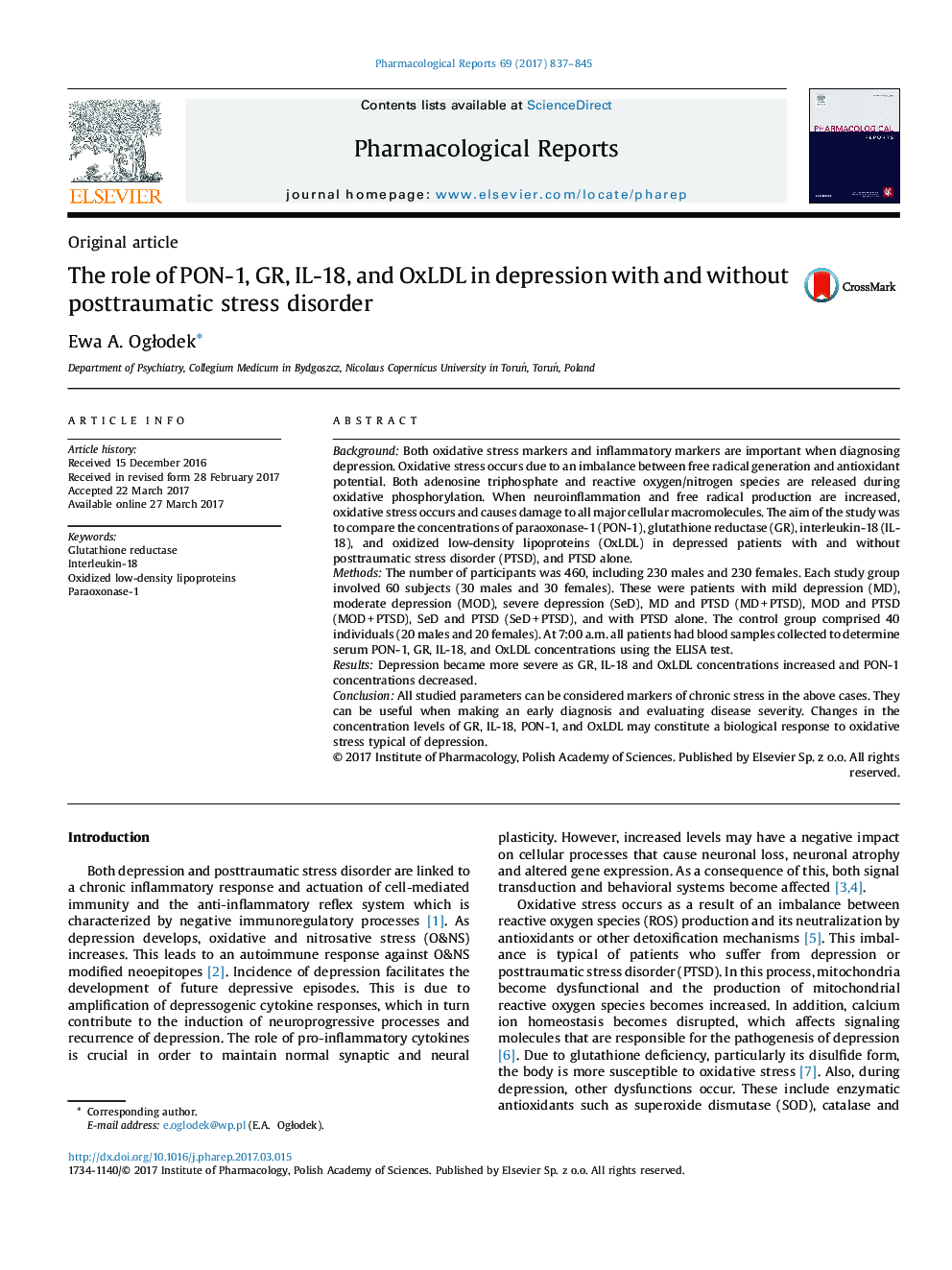| Article ID | Journal | Published Year | Pages | File Type |
|---|---|---|---|---|
| 5514965 | Pharmacological Reports | 2017 | 9 Pages |
BackgroundBoth oxidative stress markers and inflammatory markers are important when diagnosing depression. Oxidative stress occurs due to an imbalance between free radical generation and antioxidant potential. Both adenosine triphosphate and reactive oxygen/nitrogen species are released during oxidative phosphorylation. When neuroinflammation and free radical production are increased, oxidative stress occurs and causes damage to all major cellular macromolecules. The aim of the study was to compare the concentrations of paraoxonase-1 (PON-1), glutathione reductase (GR), interleukin-18 (IL-18), and oxidized low-density lipoproteins (OxLDL) in depressed patients with and without posttraumatic stress disorder (PTSD), and PTSD alone.MethodsThe number of participants was 460, including 230 males and 230 females. Each study group involved 60 subjects (30 males and 30 females). These were patients with mild depression (MD), moderate depression (MOD), severe depression (SeD), MD and PTSD (MDÂ +Â PTSD), MOD and PTSD (MODÂ +Â PTSD), SeD and PTSD (SeDÂ +Â PTSD), and with PTSD alone. The control group comprised 40 individuals (20 males and 20 females). At 7:00 a.m. all patients had blood samples collected to determine serum PON-1, GR, IL-18, and OxLDL concentrations using the ELISA test.ResultsDepression became more severe as GR, IL-18 and OxLDL concentrations increased and PON-1 concentrations decreased.ConclusionAll studied parameters can be considered markers of chronic stress in the above cases. They can be useful when making an early diagnosis and evaluating disease severity. Changes in the concentration levels of GR, IL-18, PON-1, and OxLDL may constitute a biological response to oxidative stress typical of depression.
